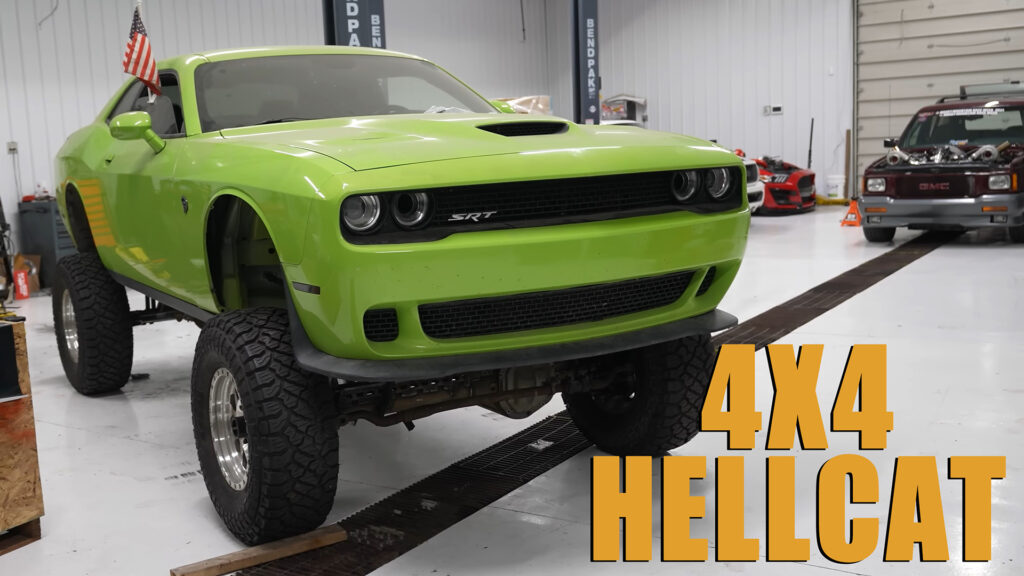The off-road Hellcat features four-wheel drive and rides on Ford F-350 axles equipped with 35-inch all-terrain tires.
5 hours ago
 –>
–> 
–>
Off-road sports cars have been all the rage these days, as evidenced by vehicles like the Porsche 911 Dakar and Lamborghini Huracan Sterrato. Many people have attempted to make their version of such a car, and the latest comes in the form of a 4×4 Dodge Challenger Hellcat.
The creation comes from Westen Champlin, who you may remember as the same man who built the 1,500-hp Cummins diesel-powered Mustang. While we compared this latest vehicle to the Dakar in the title, it’s arguably even more extreme. For one, there’s the matter of power. Whereas the Dakar makes a respectable 473 hp (480 PS / 353 kW) from its twin-turbo flat-six, the Hellcat blows it out of the water with its 707 hp (717 PS / 527 kW) supercharged V8.
Read More: Dodge Charger And Challenger TRX Renders Propose Monstrous Off-Road Variants
advertisement scroll to continue
[embedded content]
There’s also the matter of ground clearance. The Dakar features a lifted suspension with revised geometry, but it’s only around 3 inches taller than a normal 911 GTS in its highest setting. The Hellcat, on the other hand, rides on completely new solid axles from a Ford F-350, sitting nearly entirely above its 35-inch all-terrain tires.
See Also: Audi RS6 Off-Road Conversion Is The Family Guy’s Porsche 911 Dakar
To accomplish this feat, Champlin had to fabricate custom frame rails, modify the donor axles, and cut the floorboard just to make everything fit. He also added driveline components from a Chevy pickup truck to convert it to four-wheel drive. This wasn’t some hack job, either, as without calculating the proper suspension and driveline geometry, the new components wouldn’t handshake once installed.
We’ll admit that the 4×4 Challenger is probably less poised with its heavy curb weight, truck suspension, and front-engine configuration, but it’ll probably be better at serious off-roading than the Porsche. Think trophy truck rather than a rally car. As it currently stands, Champlin still has a decent way to go before the build’s finished, but he’s made some good progress so far, and we’re eager to see how the final product turns out.
[embedded content]

